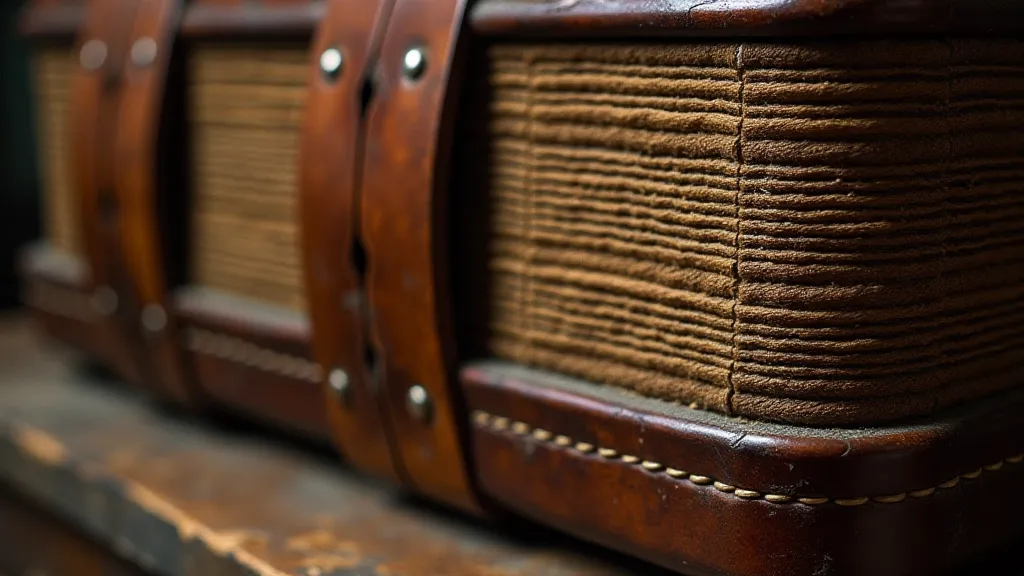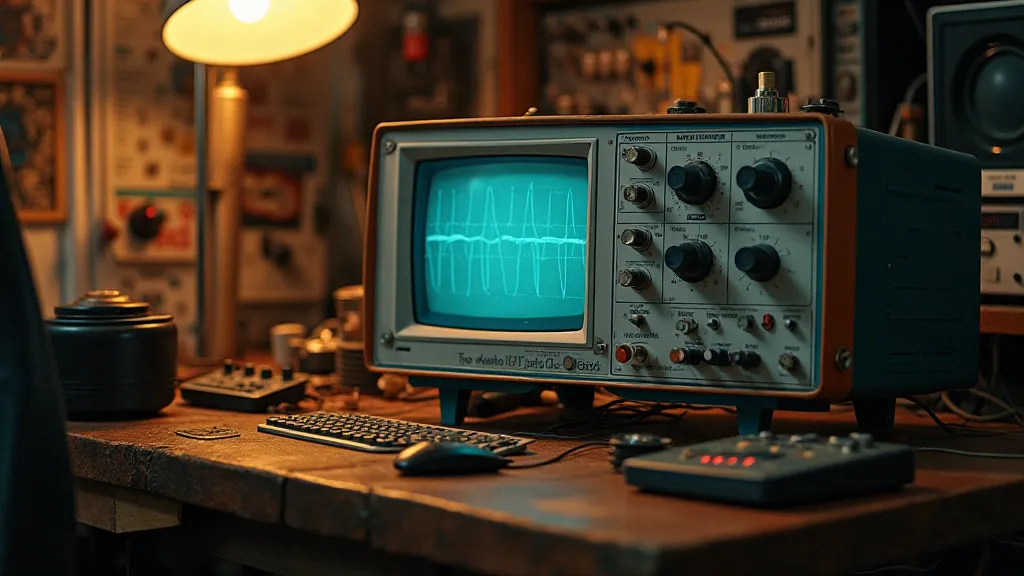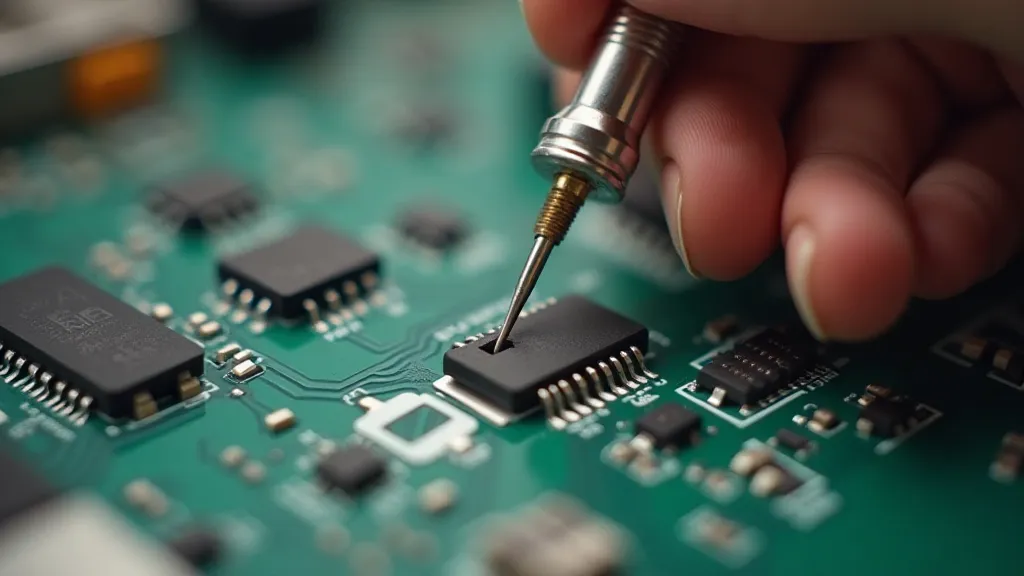Whispers from the Void: Troubleshooting Techniques for the Audacious Builder
There’s a certain romance, a profound feeling of connection to the past, that comes with building your own ham radio transceiver. It’s more than just soldering components and following a schematic; it's engaging in a craft that echoes generations of tinkers, inventors, and communicators who, before the ubiquity of smartphones, relied on ingenuity and a little elbow grease to reach across distances. This process, particularly when things go wrong – and they inevitably will – is where the real learning and appreciation begin. It’s akin to restoring an antique accordion; a complex mechanism, once a source of joy and connection, now silent, demanding patience and a deep respect for its intricate workings.
I remember my grandfather, a quiet man of few words, meticulously restoring a Hohner Classique accordion. The bellows were cracked, the reeds were rusted, and the keys stuck. It wasn’t just a repair; it was a resurrection. He’s the one who first introduced me to the satisfaction of fixing things, of understanding how things worked, not just accepting them as black boxes. “Listen to it, boy,” he’s say, holding his ear to the bellows. “It’s trying to tell you what’s wrong.” That's a lesson I carry with me still, especially when faced with a stubbornly silent transceiver.

The Mindset of the Restorer
Troubleshooting a ham radio transceiver isn’t about brute force or guesswork. It's about detective work. It requires a mindset akin to that of an antique accordion restorer. You have to approach the problem with respect for the device, recognizing the skill and effort that went into its original construction. You need to be observant, methodical, and – crucially – patient. There’s a reason those antique accordions are still around, even in less-than-perfect condition. They were built to last, and they reward those who take the time to understand them.
Impulsive actions rarely yield positive results. That frantic search for the single, catastrophic component can often overlook the subtle, cumulative effects of tiny imperfections. It's akin to trying to revive a silent accordion by simply replacing the reeds, ignoring the worn bushings or the warped bassoon slider. The issue might lie in a combination of factors, each contributing a small amount to the overall failure. Understanding the underlying principles of antenna design, for example, can be a significant help when troubleshooting signal issues; sometimes, a poorly performing antenna is the root cause, impacting transmit and receive performance alike. Learning more about the language of loops and how various antenna configurations influence signal propagation can be incredibly valuable.
Common Culprits and Diagnostic Techniques
Let’s consider some common transceiver ailments and how to tackle them. One frequent problem is a lack of transmit signal. Before assuming a faulty final amplifier, check the simpler things first: power supply voltage, carrier oscillator stability, and the integrity of the transmit/receive (T/R) switch. A marginal power supply can cause a cascade of errors, and a drifting oscillator will result in a signal that is unreadable, even if it is present. Remember, a strong signal is useless if it's way off frequency. Beyond the basic electronics, the art of achieving reliable, long-distance communication involves a deep understanding of propagation conditions. Exploring beyond distance, and the techniques employed by operators to overcome signal limitations, can offer valuable insights even when troubleshooting local issues.
Signal noise can be equally frustrating. It's tempting to blame atmospheric interference, but often the source is closer to home. A poorly shielded circuit can act as an antenna, picking up noise from nearby electronics. Check grounding practices – a single point ground is often a good starting point. Review your cable connections meticulously; a loose BNC connector can introduce a surprising amount of noise. Testing with a spectrum analyzer (if available) can be invaluable in identifying the source and frequency of the interference.
Another common issue, particularly in older designs, is the loss of memory or configuration data. This often stems from failing EEPROM chips, which are susceptible to degradation over time. While replacement is often the solution, understanding the underlying cause – perhaps inadequate power supply filtering or excessive voltage spikes – can prevent future occurrences. Restoring a silent accordion often reveals the same principle: addressing the root cause, not just treating the symptoms. This requires a systems-level understanding, not just component-level fixes. The complexity of modern transceivers is growing exponentially, with increasing reliance on sophisticated digital signal processing and embedded systems. For those interested in pushing the boundaries of what’s possible, integrating digital horizons and experimenting with software-defined radio (SDR) can open up a whole new world of possibilities, but also introduces new troubleshooting challenges.

The Power of Documentation and the Value of Community
Your documentation is your lifeline. If you're building from a published design, reread the instructions carefully, even if you think you already know them. Pay close attention to any notes or warnings about potential pitfalls. If you’re modifying an existing design, meticulously record every change you make. Keeping detailed notes will not only help you debug problems later, but it will also allow you to share your experiences with others. Imagine the frustration of trying to repair an antique accordion without any schematics or repair manuals! The same principle applies to ham radio transceivers – detailed records are invaluable.
The ham radio community is an invaluable resource. Don’t be afraid to ask for help. There are countless forums and online groups where experienced builders are willing to share their knowledge and offer advice. Describing your problem clearly, providing as much detail as possible, and demonstrating that you’ve done your homework will increase your chances of getting a helpful response. Just as a seasoned accordion repairman can offer insights into a particularly stubborn reed, a knowledgeable ham radio operator can help you unravel a complex circuit problem. Furthermore, exploring designs that leverage open-source principles is becoming increasingly common, and understanding how to adapt and improve upon existing designs is a valuable skill. Delving into the echo of innovation and the philosophy behind open-source hardware can inspire new approaches to troubleshooting and design.
More Than Just Electronics: An Appreciation for Craftsmanship
Ultimately, building a ham radio transceiver, especially when facing challenges, is about more than just electronics. It’s about appreciating the craftsmanship that went into its design and construction. It's about understanding the limitations of the materials and the ingenuity of the solutions. Just like the intricate mechanism of an antique accordion, the transceiver is a testament to human creativity and perseverance.
The satisfaction of getting that first successful transmission, of hearing your voice crackling over the airwaves, is amplified tenfold by the knowledge that you built it yourself, that you overcame the obstacles, and that you learned something in the process. It's a feeling of accomplishment that transcends mere technical competence. It connects you to a lineage of inventors and communicators, a legacy of innovation and a deep-seated need to connect with others. That feeling, just like the music emanating from a restored accordion, is a reward in itself. The process of restoration, whether it's of an accordion or a transceiver, instills a sense of patience and a deep respect for the complexity of mechanical and electrical systems. It's about more than just fixing something; it's about understanding it.

So, the next time you encounter a problem with your transceiver, don’t despair. Embrace the challenge. Listen to it, as my grandfather always told me. Approach it with patience, with methodical thinking, and with a deep respect for the craft. You might just discover something extraordinary about yourself and the device you’re building. Remember, troubleshooting is not just about identifying and correcting errors; it’s about expanding your knowledge and appreciation for the art and science of radio communication. The journey of a ham radio builder is a continuous learning process, and every challenge overcome is a step further along that path. Think of the intricate workings of an antique accordion - each component playing a vital role in creating beautiful music. Similarly, in a transceiver, every circuit and component works in harmony to achieve the goal of reliable communication. Embrace the complexity, celebrate the ingenuity, and enjoy the journey of discovery.
Consider the ethical implications of radio communication. As operators, we have a responsibility to use our skills and equipment responsibly, respecting regulations and minimizing interference to others. Just as an accordion player must respect the acoustics of a concert hall, we must respect the radio spectrum and avoid causing undue disruption. The hobby is about more than just transmitting signals; it's about building community and fostering a spirit of collaboration. Sharing knowledge, offering assistance, and upholding the principles of amateur radio are essential to preserving the integrity and vitality of the hobby for generations to come. The joy of connecting with others across distances is a powerful motivator, and it’s our collective responsibility to ensure that this connection remains positive and sustainable.





